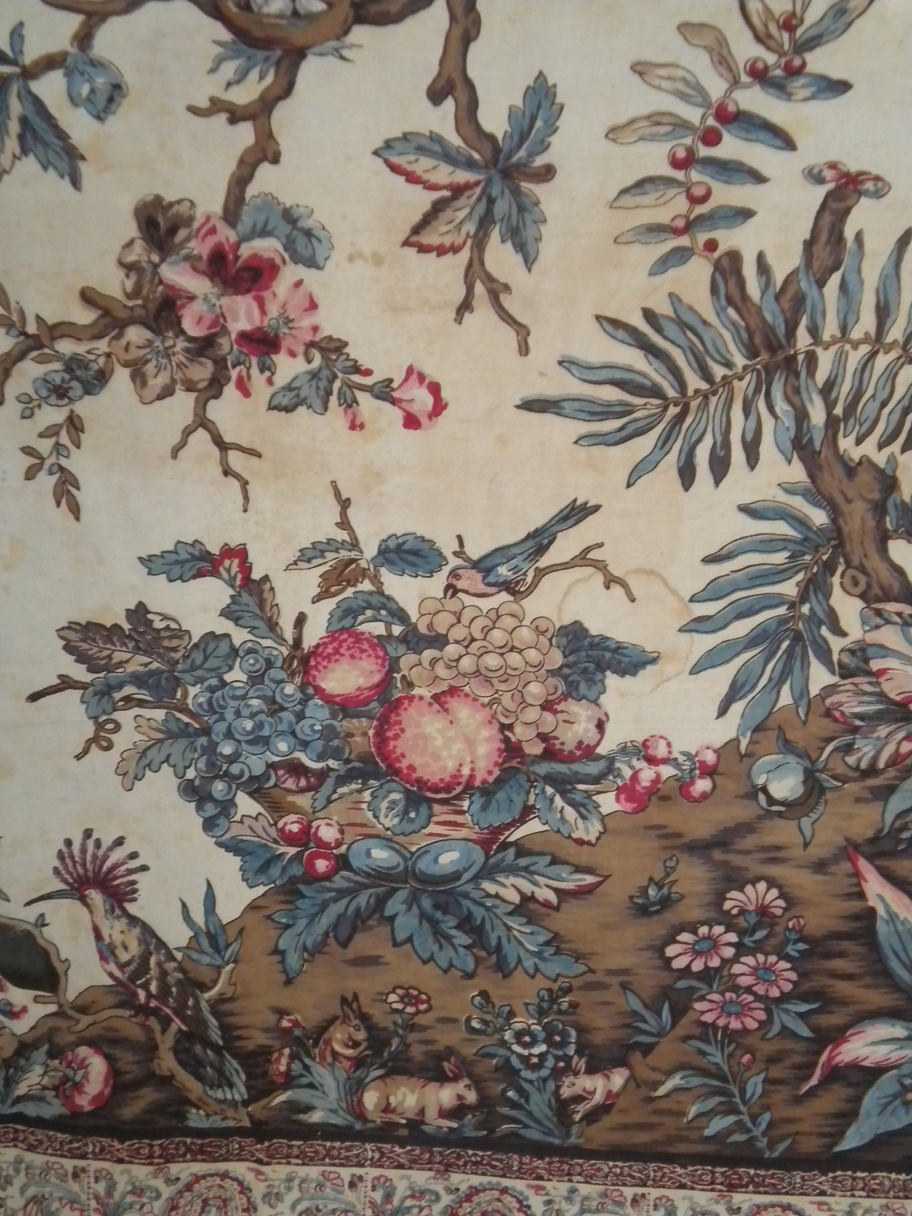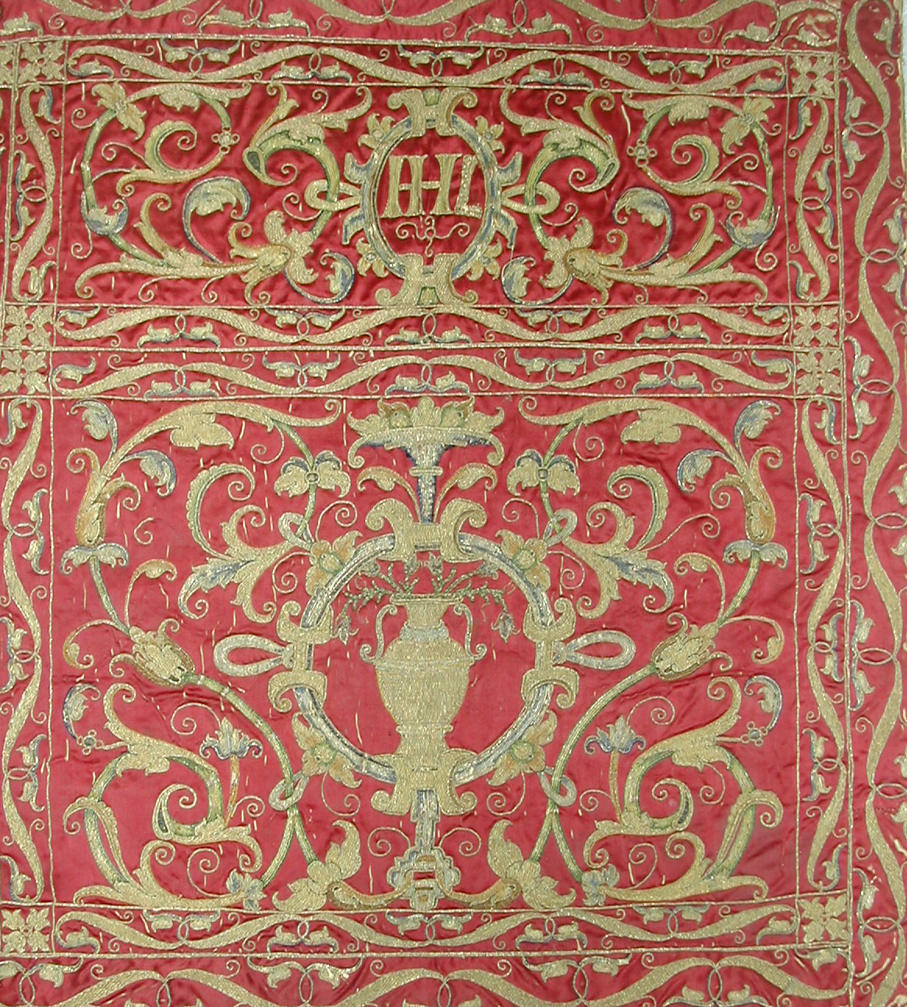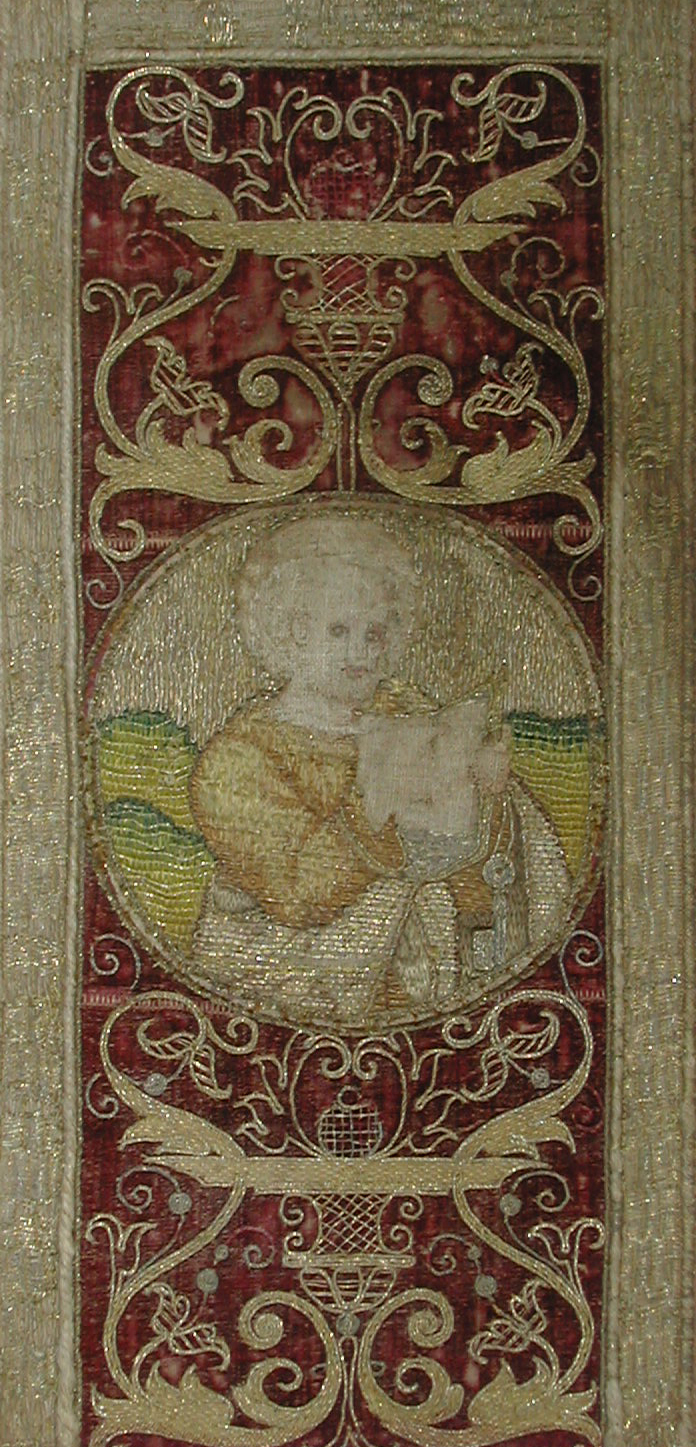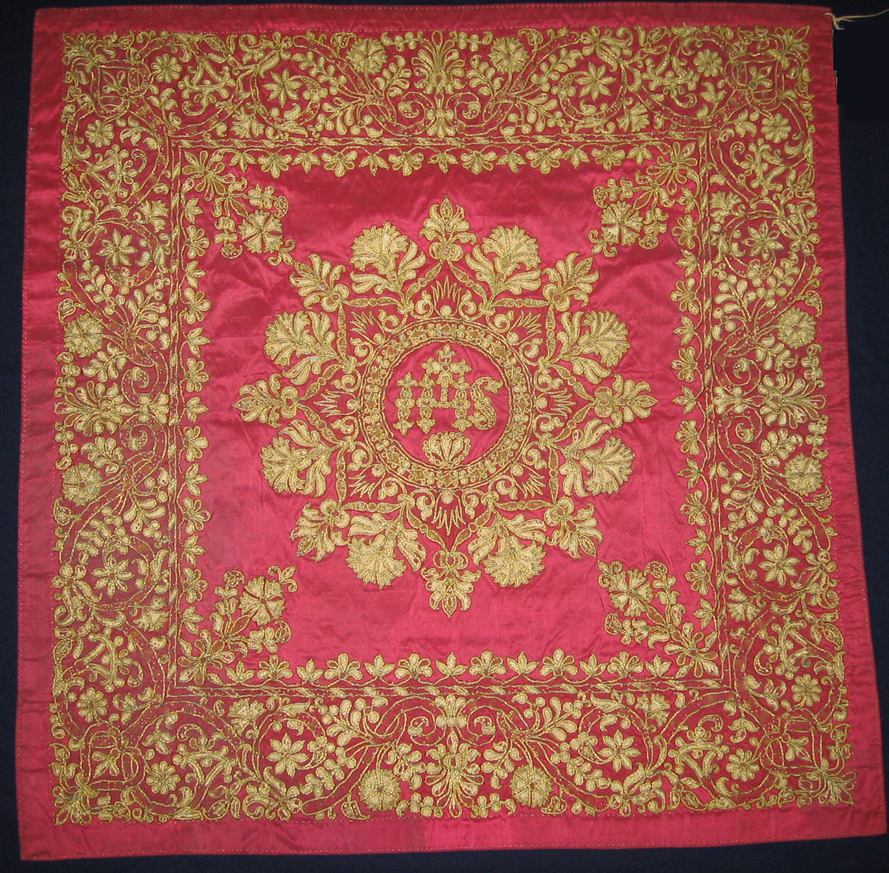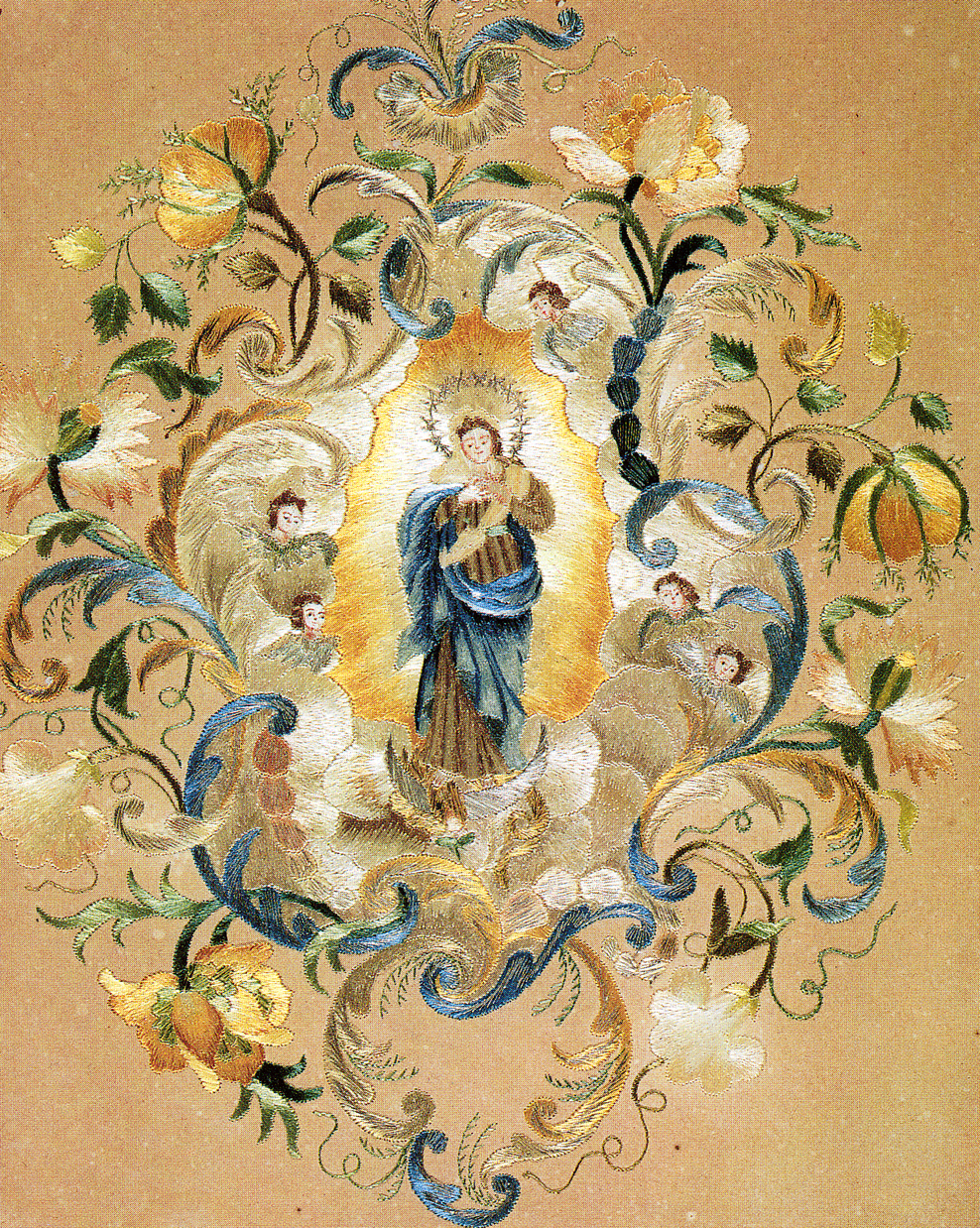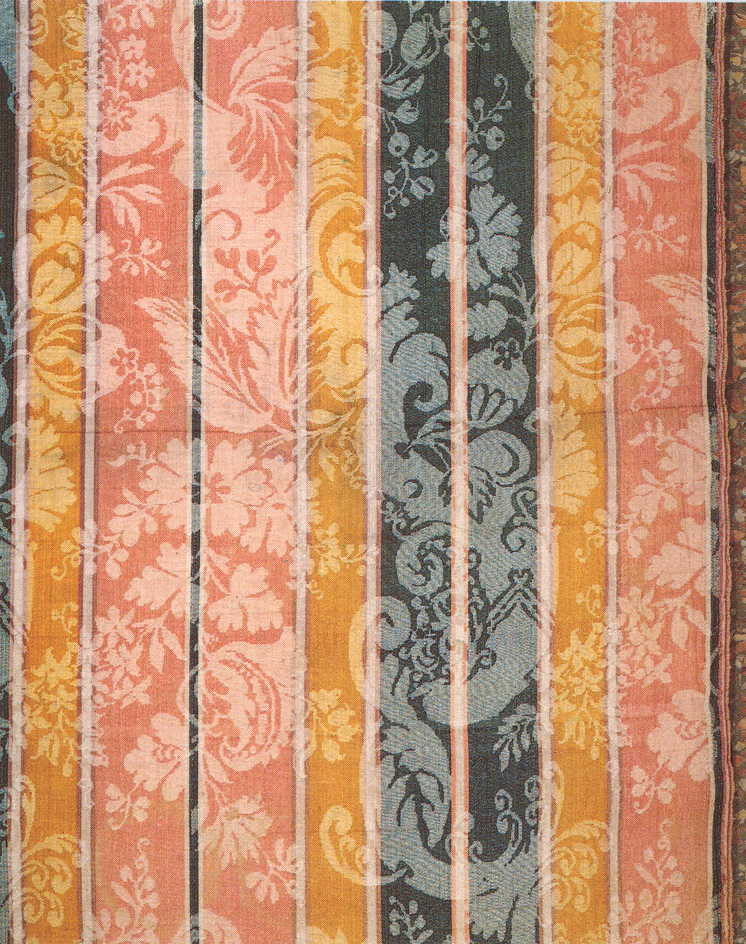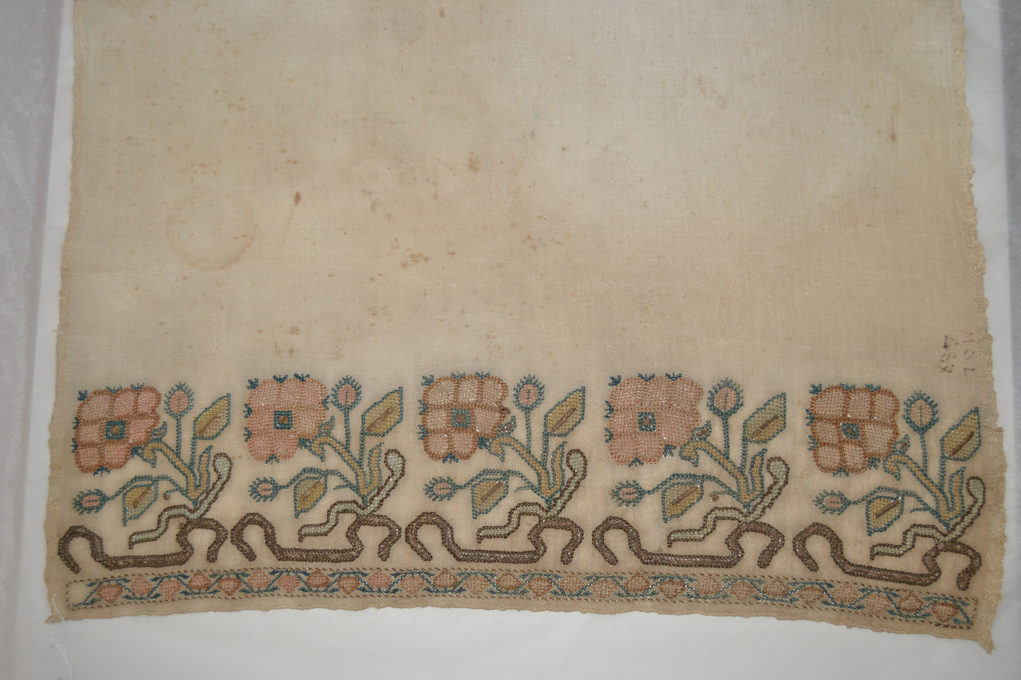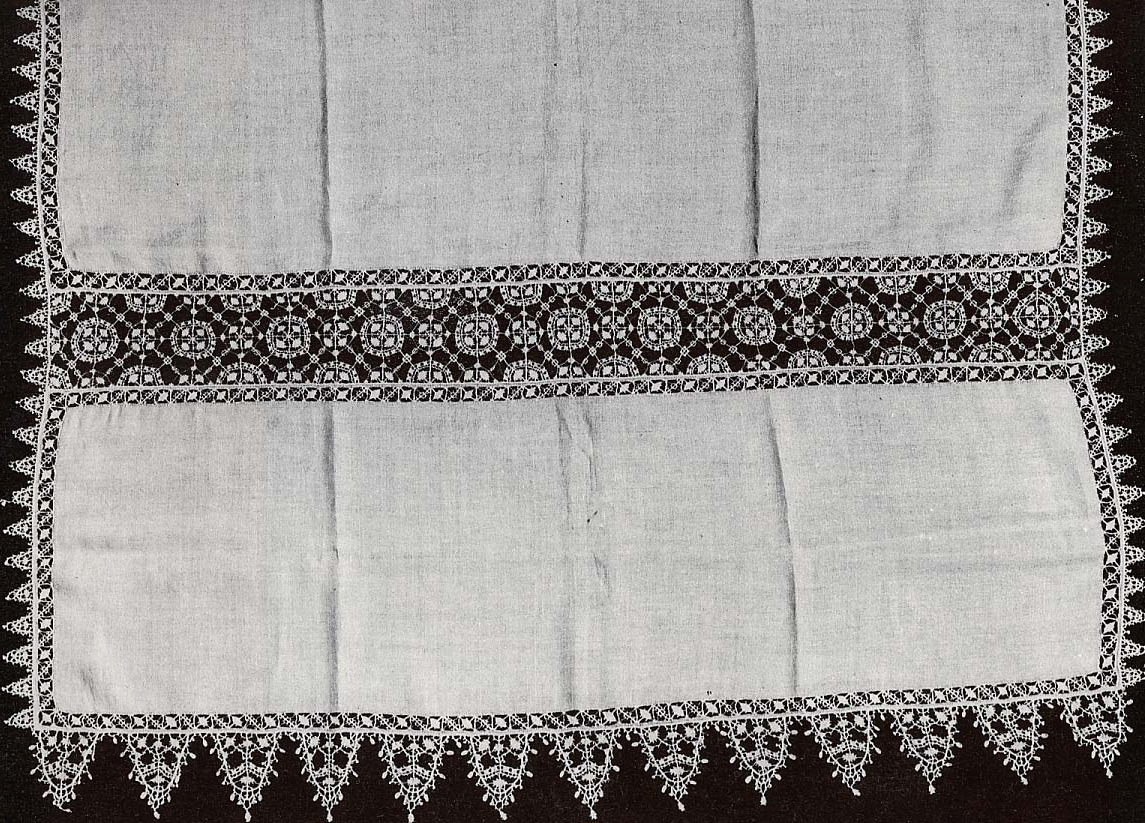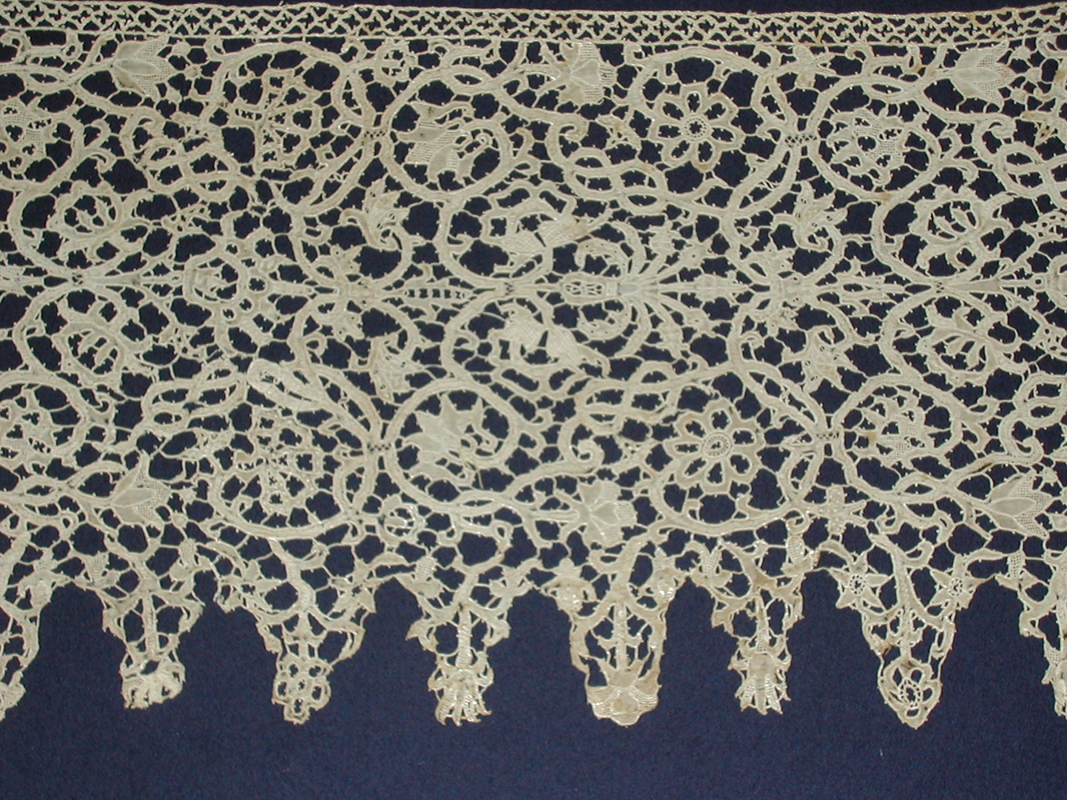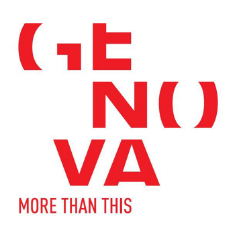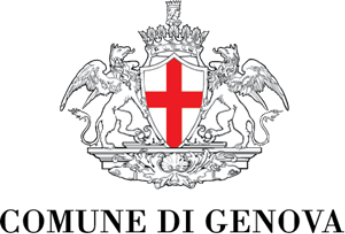
Click here to view image
Mezzaro of the macaque
Mezzaro of the macaque
M.G.L. 1326
Printed cotton canvas with wooden dies
The mezzaro features red, pink, purple, two shades of blue and two shades of brown stamped decorations. The border features a double boteh motif, characteristic of oriental carpets. The central field depicts a small mountain, on which stand a vase with peonies and tulips, a tree and a basket of fruit. On the tree, where the branches fork off from the main trunk, there is a second basket of flowers, slightly tilted and precariously balanced. A parrot, a peacock and a hoopoe are at the base of the relief, while other birds, including a bird of paradise, are perched on the branches of the tree and on the flowering shoots that protrude from the sides. Numerous flowers fill the scene, along with other animals and insects including butterflies, bees, rabbits, a deer, a mountain goat and a macaque, from which the mezzaro takes its name, climbing on the left branch at the top.

